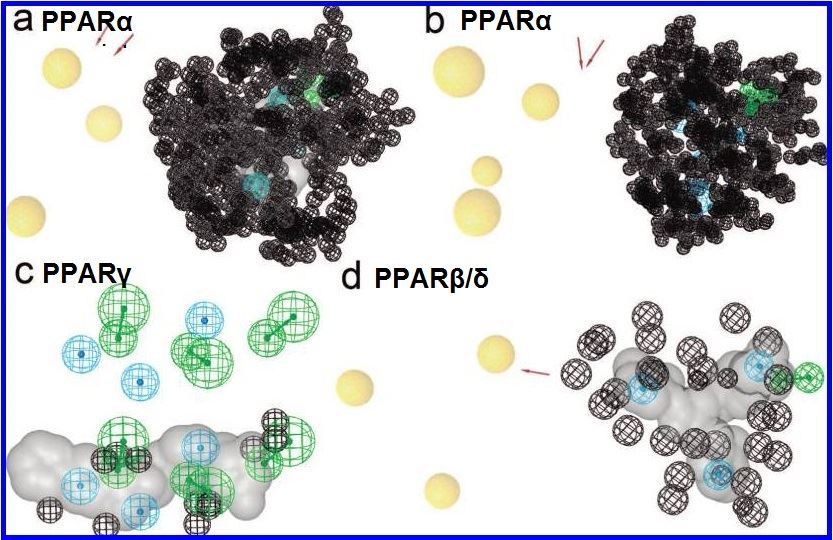The roles of peroxisome proliferator-activated receptors PPARα, PPARβ/δ, and PPARγ in cardiovascular disease are receiving widespread attention. As ligand-activated nuclear receptors, they play a role in the regulation of lipid and glucose metabolism. Indirectly, their lipid-lowering effect also leads to a reduction of the risk for cardiovascular diseases, primarily atherosclerosis. Creative Biolabs is dedicated to establishing the most exquisite service platform and providing high-quality nuclear receptors modeling services to offer comprehensive technical support for advancing our clients’ projects.
Atherosclerosis is considered as a chronic inflammatory disease involving cells from the vessel wall as well as blood-borne cells. Each of these cell types expresses PPAR isotypes with varying amounts and, hence, is a potential target of PPAR ligands. Mounting evidence indicates that PPAR ligands modulate the process of atherogenesis at various stages. As far as cardiac disease is concerned, the anti-inflammatory effects of PPAR isotypes provide a clear rationale for ligand treatment following permanent or transient coronary artery occlusion. The far majority of preclinical studies point to the protective effects of PPAR ligands, as exemplified by attenuation of irreversible tissue injury and improved cardiac function.
The Y-shaped ligand-binding pocket of PPAR is large and therefore binds a multitude of fatty acids and synthetic ligands. PPARα possesses the largest and most hydrophobic pocket for ligands among the three subtypes. PPARγ has a more polar and smaller pocket than PPARα, followed by a substantially smaller PPARβ/δ pocket. The PPAR pockets can be divided into three arms. Arm I consists of mainly polar residues and includes the activation function helix 2 (AF-2 helix). The hydrophobic moiety of PPAR agonists either interacts with the hydrophobic arm II (tail up pocket) or with the partly hydrophilic arm III (entrance region of the ligand-binding pocket, tail down pocket). Among the ligand-binding pockets of the three PPAR subtypes, the shape of arm III but not arm I and arm II is conserved. Therefore, the subtype specificity of PPAR agonists depends on the shape of these two arms.
 Fig.1 Overview of the complexity of the PPARs agonist model.
Fig.1 Overview of the complexity of the PPARs agonist model.
The three PPAR subtypes regulate pathways involved in glucose and lipid metabolism, so ligands of all PPAR subtypes represent promising tools for pharmacological research or potential drugs for treating diseases such as atherosclerosis, cardiac fibrosis, dyslipidemia, and type 2 diabetes. The pharmacophore modeling approach can be used in conjunction with 3D shape and electrostatic similarity search techniques to screen commercial compound libraries for novel PPARα, PPARβ/δ, and PPARγ agonist scaffolds. Biological evaluation of selected compounds not only led to the production of novel PPARα and PPARγ agonists, but also to compounds having both PPARγ agonism and PPARβ/δ antagonistic activity. We can provide a variety of structure-based nuclear receptors modeling approaches to meet customers’ specific requirements.
Creative Biolabs has been working on drug development for years, and we whole-heartedly cooperate with you to accomplish our shared goals. Our team provides you with outstanding support and meets your specific needs through a professional technology platform. If you are interested in our services, please contact us for more details.
All listed services and products are For Research Use Only. Do Not use in any diagnostic or therapeutic applications.